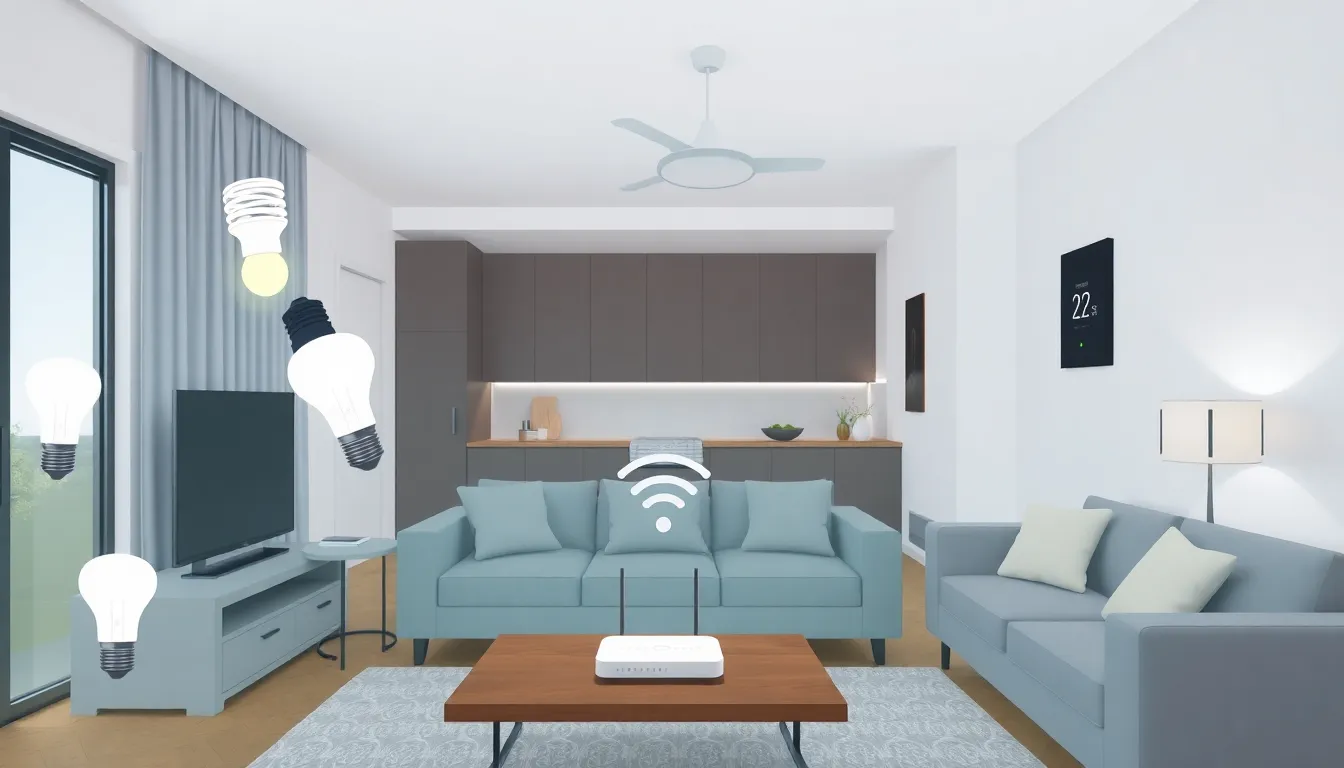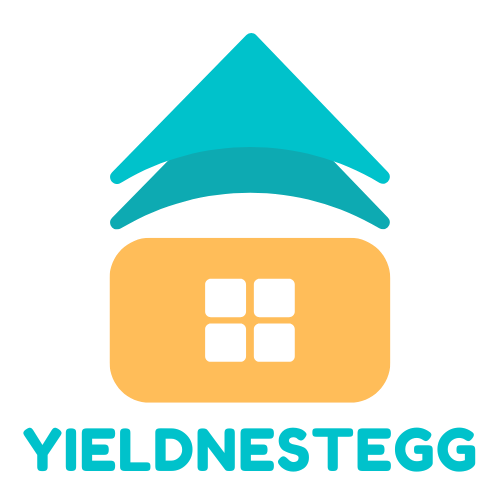Imagine waking up in the morning and your coffee is brewing, the blinds are opening, and your favorite playlist is softly playing, all without lifting a finger. Welcome to the world of home automation technologies, where your home transforms into a smart haven that anticipates your needs. It’s like living in a sci-fi movie, but without the flying cars—yet!
Home automation isn’t just about convenience; it’s about creating a lifestyle that blends comfort and efficiency. With smart devices that communicate seamlessly, homeowners can control everything from lighting to security with just a tap on their smartphones. So why not embrace the future? After all, who wouldn’t want a home that knows them better than their own family? Dive into the fascinating realm of home automation and discover how it can revolutionize daily living, one gadget at a time.
Table of Contents
ToggleOverview of Home Automation Technologies
Home automation technologies integrate various systems and devices to create an interconnected environment. These modern solutions enhance everyday living by streamlining tasks and improving efficiency. Smart lighting allows users to adjust brightness or color with a simple command, while smart thermostats learn preferences to optimize energy use without compromising comfort.
Security systems also benefit from automation, offering features like remote monitoring and alerts. Sensors detect motion, while cameras provide real-time video feeds accessible via mobile devices. Homeowners can ensure safety while away from their properties.
Voice-activated assistants play a crucial role in home automation. They enable users to control devices hands-free, making tasks more convenient. These assistants also provide information, answer questions, and manage calendars, further enhancing the smart home experience.
Smart appliances are another cornerstone of home automation. Refrigerators can manage inventory, ovens can cook food at scheduled times, and washing machines can operate remotely, offering an unprecedented level of convenience. These innovations contribute to streamlined household management.
Networking protocols, such as Zigbee and Z-Wave, facilitate communication between devices. These protocols connect various smart gadgets, creating a cohesive system that users can control via a centralized hub or app.
Energy management is a significant advantage of home automation. Automated systems monitor and control energy consumption. This not only raises efficiency but also reduces utility bills. Finally, the growing availability of affordable smart devices accelerates the adoption of home automation, enabling more homeowners to embrace this technology.
Key Components of Home Automation

Home automation comprises several key components that create an interconnected and efficient living environment.
Smart Devices
Smart devices play a crucial role in home automation. These gadgets enhance convenience and efficiency by allowing users to control lighting, temperature, and security systems remotely. Examples of smart devices include smart bulbs that adjust brightness and color, smart thermostats that learn heating preferences, and smart locks that provide secure access from anywhere. Integration of these devices boosts overall comfort and enables energy savings through better management of resources.
Home Hubs
Home hubs act as the central command for smart devices. These hubs facilitate communication between various devices, irrespective of brand or protocol. Popular examples include Google Nest Hub and Amazon Echo Plus. Homeowners rely on these hubs to manage their smart ecosystems using a single interface or voice commands. Compatibility with multiple devices streamlines control and enhances the user experience, making it easier to automate routines throughout the house.
Connectivity Options
Connectivity options ensure seamless interaction among smart devices. Common protocols like Wi-Fi, Zigbee, and Z-Wave support device communication within a home automation network. Wi-Fi offers high bandwidth for data-intensive applications, whereas Zigbee and Z-Wave provide reliable connections even at low power usage. Homeowners benefit from these options by achieving a balance between range, reliability, and energy efficiency. Selecting the right connectivity option depends on the specific needs and layout of the home automation system.
Benefits of Home Automation Technologies
Home automation technologies offer various benefits that enhance the quality of life for homeowners. They streamline daily tasks, improve energy efficiency, and provide greater control over home systems.
Convenience and Efficiency
Smart devices simplify everyday activities, making life more manageable. Homeowners can control lighting, heating, and security systems remotely through smartphones or voice commands. Automating routine tasks frees up time, allowing individuals to focus on more important matters. Integration with home hubs facilitates communication among devices from different brands, reducing compatibility issues. Simplified automation routines help maintain consistent household settings for comfort.
Energy Savings
Home automation significantly contributes to energy savings by optimizing consumption. Smart thermostats automatically adjust temperatures based on occupancy patterns, reducing waste. Homeowners can monitor energy usage reports and adjust settings for efficiency. Automated lights turn off when no one is present, minimizing unnecessary power consumption. Additionally, energy management systems enable users to track and control devices, resulting in lower utility bills. Overall, smart technology fosters sustainable practices while benefiting the budget.
Popular Home Automation Platforms
Numerous platforms enable seamless home automation, each offering unique features and capabilities. These popular solutions enhance convenience, control, and integration.
Amazon Alexa
Amazon Alexa stands out as a leading voice-activated assistant. It connects various smart devices through simple voice commands. Compatibility with thousands of devices ensures users can automate lighting, security, and entertainment systems easily. The Alexa app provides mobile control and customization options, making device management straightforward. Routines can be created, allowing for multiple actions triggered by a single command. For instance, users can say “Goodnight” to switch off lights and lock doors simultaneously. Continuous updates keep the system improving and expanding its functionality, maintaining its position at the forefront of smart home technology.
Google Home
Google Home offers a robust platform for home automation leveraging Google Assistant’s capabilities. Users can manage thousands of compatible devices through voice or app control. Its integration with Google services enhances functionality, allowing for personalized routines and reminders. The system responds accurately to voice commands, enabling quick adjustments for lighting, temperature, and security. Users can create scenes for different moments, such as movie nights or gatherings. Information is accessible through voice queries, making everyday tasks more efficient. Regular updates enhance compatibility and features, ensuring that Google Home remains a popular choice for smart home setups.
Apple HomeKit
Apple HomeKit delivers a secure and user-friendly approach to home automation. Integration with the Apple ecosystem allows for seamless control across devices using Siri or the Home app. Users enjoy strong security features, including end-to-end encryption for their data. HomeKit’s compatibility with various products ensures a wide selection of smart devices. Scenes and automations can be created to cater to specific needs and preferences. For instance, a “Good Morning” scene may adjust lighting, temperature, and coffee brewing all at once. Frequent updates maintain the platform’s relevance, solidifying its position among popular home automation solutions.
Challenges and Considerations
Home automation technologies present unique challenges that homeowners should consider before fully integrating smart systems into their living spaces. Addressing security vulnerabilities and compatibility issues remains essential in creating an efficient and safe smart home.
Security Concerns
Security concerns often arise with the use of smart devices, as these devices can become potential entry points for cyberattacks. Hackers may exploit weak passwords or unpatched software vulnerabilities to access personal information. Ensuring robust security measures, like using strong passwords and enabling two-factor authentication, significantly mitigates these risks. Regular software updates also play a critical role in maintaining device security. Privacy issues related to data collection can affect user trust; therefore, homeowners should choose brands that prioritize data protection.
Compatibility Issues
Compatibility issues frequently challenge homeowners when integrating various smart technologies. Different brands may use unique protocols, leading to difficulties in device communication. Choosing a central home hub that supports multiple protocols helps streamline connectivity. Homeowners must verify compatibility before purchasing devices to avoid frustration. Researching reviews and user experiences facilitates better decision-making, ensuring that selected devices work harmoniously together. Investing in a robust system enhances the overall smart home experience and reduces potential headaches.
Home automation technologies are revolutionizing the way people interact with their living spaces. By integrating smart devices and systems, homeowners can enjoy unparalleled convenience and efficiency. The ability to control lighting, security, and energy consumption from a smartphone not only enhances comfort but also promotes a sustainable lifestyle.
As smart home solutions become more accessible, their adoption is likely to continue growing. Homeowners are encouraged to explore the myriad options available, ensuring they select compatible devices that meet their specific needs. With careful consideration of security and privacy, embracing home automation can lead to a more streamlined and enjoyable living experience.



